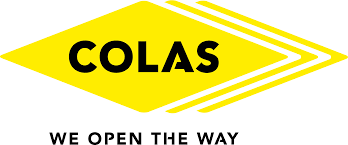
Thierry Delcroix, Deputy Director of Development at Colas, a French company specialized in public works, shares his experience with us about the way in which market intelligence is used within this subsidiary of Bouygues Construction. Bouygues Construction is specialised in the construction and maintenance of transport infrastructures (road, rail and air), urban and leisure developments. Created in 1929, Colas has 54 600 employees with a presence in around 50 countries with an annual turnover of 12.3 billion euros.
Which department do you belong to within Colas ?
I work at the Scientific and Technical Campus (CST) which is the research laboratory for the group. This lab has three main missions. Firstly R&D focused on the development of new products. Secondly the dissemination of our international expertise adapted to local resources. France has a particular expertise in road techniques. Finally, the third aspect involves assistance and expertise in the case of problems.
What type of need does market intelligence meet ?
Unsurprisingly R&D took us down this route. We need to pay particular attention to what is happening around the world, particularly in France, as things move very quickly. We carry out more than half of our turnover abroad. We needed to broaden our horizons in order to meet the needs of our different territories located around the world. Going on the principal that we can’t possibly know everything, we needed to detect all the best ideas no matter where they came from. This was even more the case since Colas has broadened the range of services offered to adapt to new mobility needs. Our latest innovations prove this. Flowell, our dynamic road making solution, is the perfect example. We are fully aware that we are moving away from our previous core products and services, that is to say asphalt and concrete. Therefore, it is important to better understand the new sectors towards which we are developing, in order to acquire the necessary competencies and identify the key actors, competitors etc. With these different needs being rather widespread, we realized that we needed a link with all this data. Our research was mostly limited to Google.
Bit by bit we are moving away from our core trade which mostly involved making asphalt mixes and concrete
What is the main purpose ?
The goal is to reposition certain strategic orientations or specific points according to the particular field. This means identifying innovations that might be of interest to us as those that are not yet in the radar of the group. The aim is to be one step ahead. Our actions have become more and more complicated in particularly specialised fields, market intelligence can also help us to identify potential partners in fields outside of our core business. For the solar road, for example, which was outside of our core expertise, we worked closely with the CEA (French Alternative Energies and Atomic Energy Commission ) who has specific expertise in this field. Personally, I began as a client who received this market intelligence. At the CST, we manage a large number of projects and research different products. In my role I am required to qualify the ecosystem of projets which are about to be completed in order to have a clear vision of what is happening all around. This goes beyond the purely technical aspect managed by the project manager. Today this market intelligence completes the bibliographies which are available at the start of a new project and allows us to think out of the box without sticking to our own ideas and thoughts. Monitoring technological aspects as part of this intelligence is fundamental for a project manager. Following the release of new patents, competitors etc. I would also add that it prevents us from potentially exploring an idea which has already been used, or used more quickly by a competitor. For a project manager there is nothing worse than discovering a critical piece of information too late which totally challenges the project. This is something that I experienced when I was in this role myself.
How did the need to equip yourselves with a tool come about ?
As I explained, we already carried out market intelligence, but in a disorganized and unstructured way. A few years ago, we started to make this market intelligence ‘reliable’. That meant identifying the different needs in order to make more specific research. It became quickly obvious that we needed a tool for this. We decided to go with Sindup, which helped us quickly to organize key topics, manage information feedback and incorporate very different needs. Once the expert curators and analysts had been trained each person was then independent to explore their subject. The diversity of our different activities is one of the particularities of the group. Someone who works with concrete doesn’t have the same needs as a colleague who works with asphalt. We also have subsidiaries who are specialised in rail, or even pipe systems. We can tell the need is great and each person works on very specific data. The tool helps analysts to review all these topics in a way which is adapted for each analyst.
Sindup has helped us to organise key topics, manage information feedback and incorporate very different needs.
What were the initial benefits?
Amongst other benefits the platform helps us to access university research centres and to recuperate theses which are vital to our research. This broadens potential sources. For example, we have teams working on urban heat islands and our market intelligence helped identify tenders with projects in certain cities, allowing us to bid for these projects. Further to the commitments in the Paris 2015 Agreements, companies are defining their Bas Carbone (carbon reduction) strategies to improve their carbon footprint. Within this context, different teams on the campus have also implemented market intelligence topics on the theme of Bas Carbone. Each team applies this to their own field.
How many MI/CI analysts do you have altogether?
At the beginning there were four or five people. We presented the tool to the group and then one thing lead to another, through word of mouth, particularly through actions which we put in place to make the service better known, we are now looking at fifty expert curators. For the last two years, one person has been totally dedicated to this activity in our business area. It is an investment. We believed in it and ther results are there, but we believe in it without a doubt!
What is the appetite for a more industrialised and organised market intelligence?
There is a real appetite, because in today’s world where everything moves faster and faster and the creation of startups is developing, the need is vital. The key is to find the right balance between the time spent, which can sometimes be very long, and the (informal) return on investment. Given the speed in which this has developed in our company, the time spent is considered to be an investment. More and more employees spend time on market intelligence because it means being quicker and stronger tomorrow. It is something that we have noticed and that is developing. At this stage of implementation, our colleagues come to us saying ‘your tool seems really useful, we would like to be able to use it too”! This is very positive feedback. However, it is important to pay attention to passing ‘fads’ and we have to check the efficiency of the monitoring carried out. This is difficult but important. Market intelligence is a way of continuous acculturation. The risk is that employees only look for the gem, like a start-up which has developed the providential solution for example. Luckily it is the not the majority !
Spending time on market intelligence today will make us quicker and stronger tomorrow.
Other use cases


